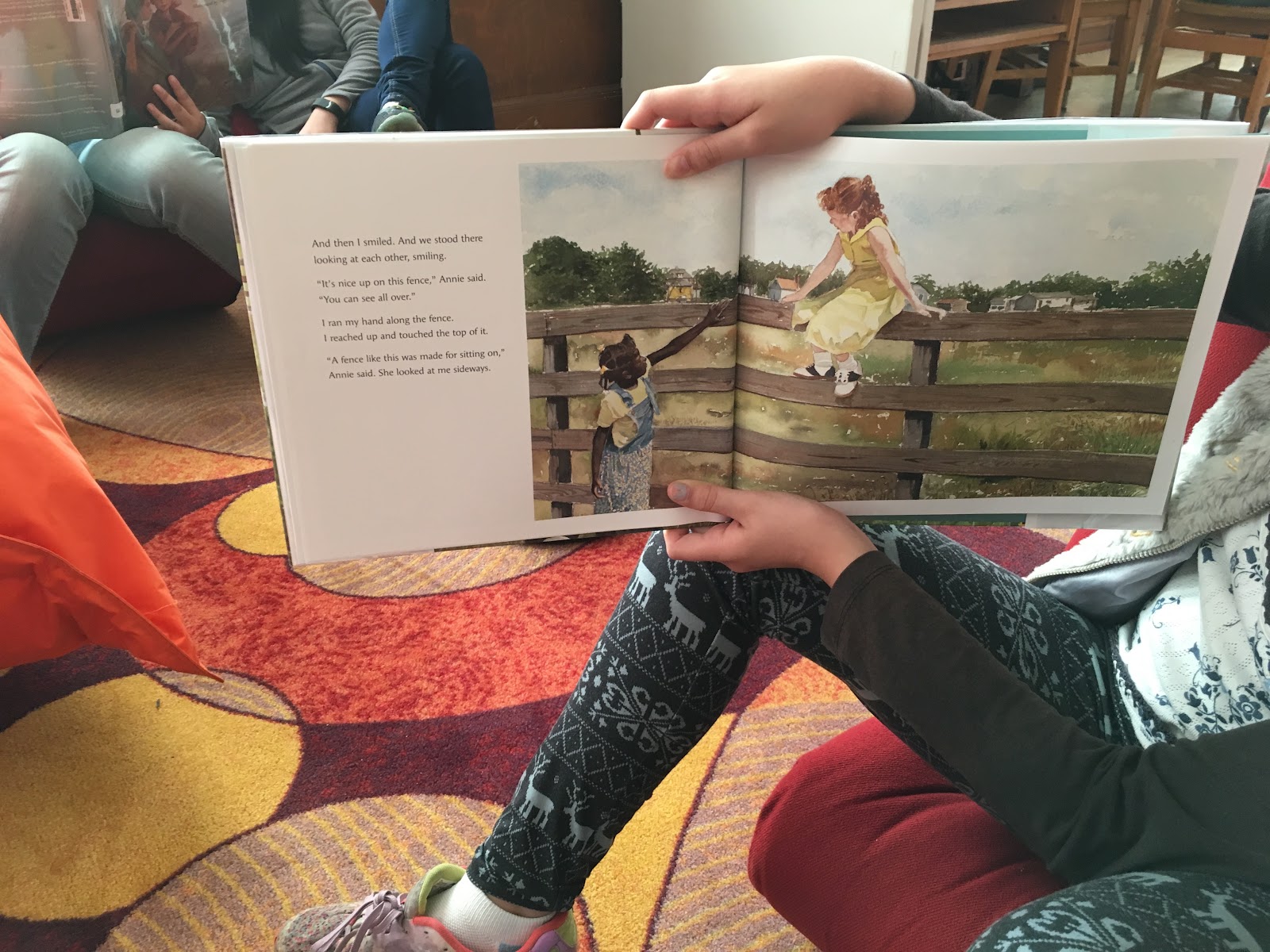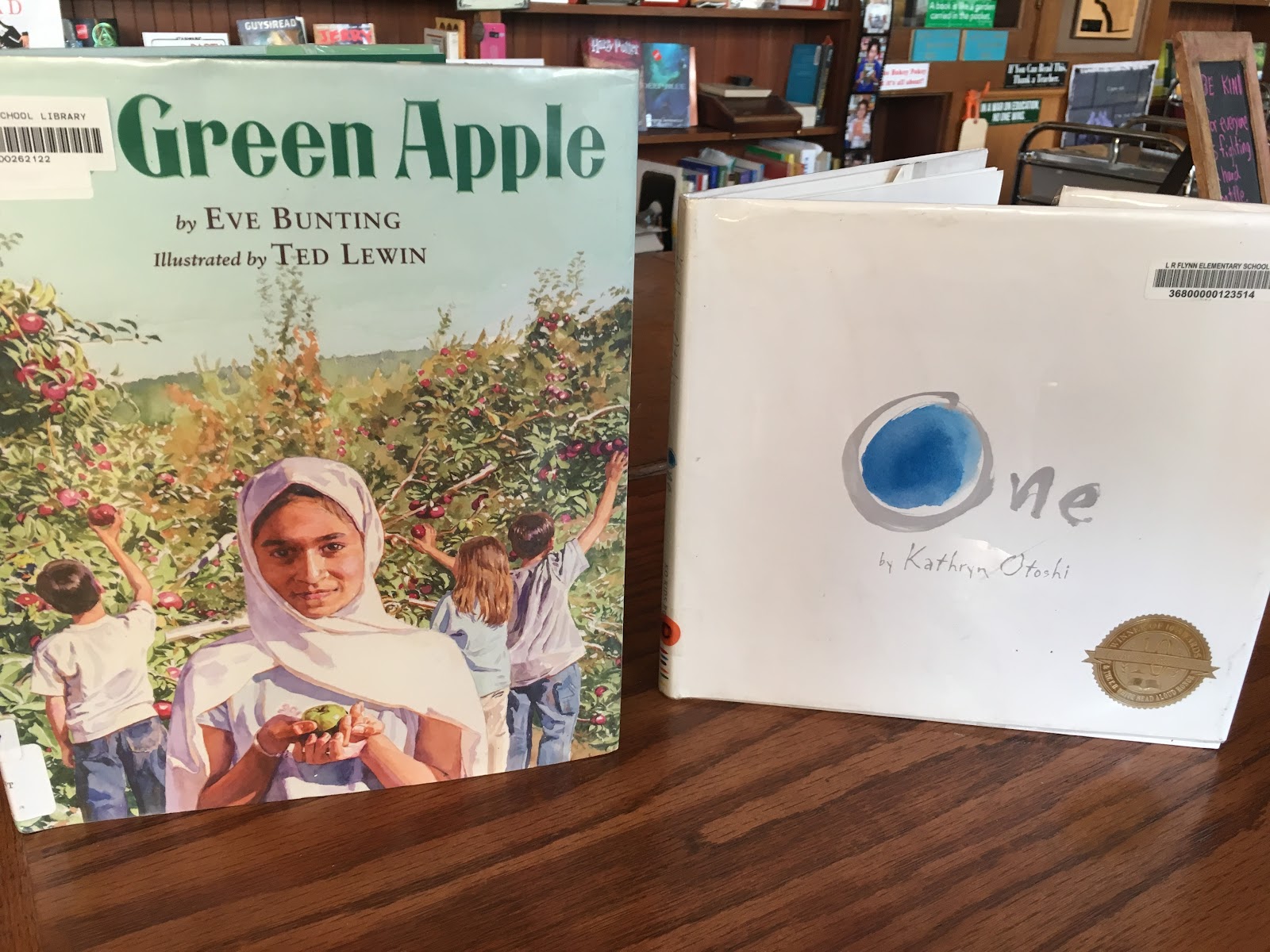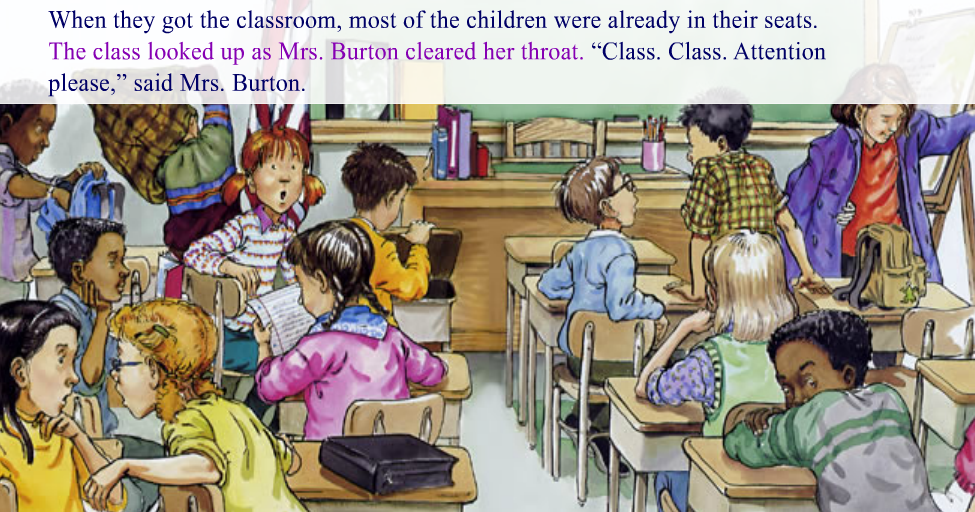Nancy Cussary TL Francisco Middle School SFUSD
Picture books are very useful in a middle school library. One way we recently used them was to further teach the elements of a story. Using a range of picture books that were personal narratives, representing characters of different cultures and having text of different complexities, students chose a book and read alone or in pairs. They completed a brief note sheet describing the story elements - narrator, characters, plot, conflict, what the student and the characters learned, and how the pictures informed the story.
If you look at the titles in the image, you’ll notice that many can also be used to address historical eras.
One teacher had her classes read one book and complete the activity together. We used the book Say Something by Peggy Moss because the story takes place in a middle school, is a narrative that is meaningful to students, has characters of different ethnicities, and is accessible across different learning abilities.
Another activity involving picture books was to use them in a science project on biomes. Students were asked to create fictional picture books that took place in one biome. They needed to include information about the environment and different animals and plants found in that biome. The professionally published picture books served as mentor texts, or examples, for the students.
Lisa Bishop TL Aptos Middle School SFUSD
Because I spent most of my teaching career as a 4th/5th grade ELL/Bilingual teacher, Picture Books have been ESSENTIAL to my teaching and to my students “getting it”. I LOVE picture books! The science class I took for my teaching credential program employed a Bay Area 3rd grade teacher who taught us about how she educated herself on unfamiliar science concepts by beginning with children’s picture books and then worked her way up to the college level concepts and vocabulary. I thought that was such great advice. When you don’t know something about a complicated topic, start with a picture book! That is what I do now and teach my students to do as well. Go to Picture Books.
Currently I’m a middle school Teacher Librarian at a large urban school for 6th-8th graders and many of my students are learning English as a second language and picture books can help a student use visual cues to understand complicated social, political, scientific and historical issues better than dense text on a page without incredible artwork.
Last year a 7th grade ELD class participated in World Read Aloud Day or WRAD. I did a 5 minute introduction to WRAD and a quick book talk of the stack of picture books I had on the tables. Students paired up and chose a picture book that they were interested in reading aloud to another student. The students spread out all over the library to read aloud to each other. The collaborating teacher and I deemed it a SUCCESS! The students clearly loved the opportunity to read aloud to each other and learn about interesting historical events and the people in those events.
For our STEP UP program this summer, we brought our incoming 6th graders into the library and I read aloud two books to them. Kathryn Otoshi’s One and Todd Parr’s It’s OK to be Different. As they get ready to come to a large middle school I wanted to have a conversation with them about bullying and about the importance to be able to be themselves and not be pressured to follow other people in middle school when it doesn’t make you feel good. During the middle of the year I read Byrd Baylor’s The Table Where Rich People Sit. This book is so beautifully written and brings the message that you don’t need to have a lot of money to be RICH! I often bring picture books like Jacqueline Woodson’s The Other Side adult pressures to keep children separated, Eve Bunting’s One Green Apple about being a young muslim immigrant, Yoshiko Uchida’s The Bracelet friendship in the times of Japanese Internment, and, The Case for Loving; The Fight for Interracial Marriage to student’s attention during different times of the school year. During Banned Books Week, I introduced The Rabbit's Wedding by Garth Williams and And Tango Makes Three as just a few of the picture books that have been challenged by the public to be taken off of our shelves.


Let Picture Books for Older Readers grow in your library!
Nancy Lucero TL Sutro Elementary School
Picture books are a main staple in my elementary school. From preschool to 5th Grade, novice to proficient readers, my students thrive on picture books. Picture books support ALL readers. Ninety-five percent of our students are English language learners. The illustrations in picture books not only help a child’s comprehension or support developing their new language but develops a sense of inclusion.
Just recently I introduced the story First Day Jitters by Julie Danneberg. Students were asked to look closely at what was going on in the pictures and share with a buddy. Before too long, students were creating noises taking place in this particular classroom; students whispered, used loud voices, made bells ring and chairs scraping the floor. Another student mentioned one child sitting all alone and feeling really angry. As in this case, visuals are better to support a child’s understanding of the “whole picture.”
In our library, students can check out a book in a bag with the character of the story. Be it Clifford, Pete the Cat, or Fly Guy, they serve as reading buddies straight out of the book. Often times, I will present a story and provide an activity that allows the students to experience what is going on in the story such as constructing something and then transforming it into something else as in Changes, Changes. One of the students’ favorite activities is having our own tea party after reading Miss Spider's Tea Party. How do I support readers at home as well? I have a treasure box where students can take a book or two to add to their home library.
Pictures and photos are truly worth a thousand words!